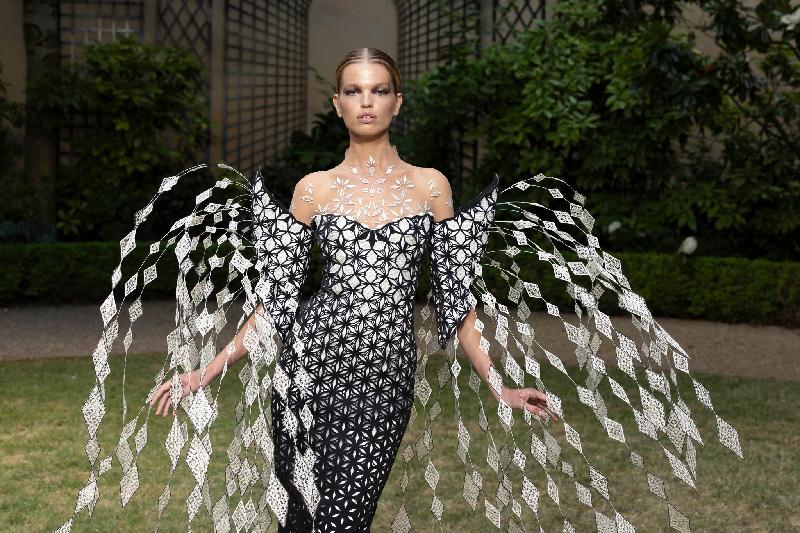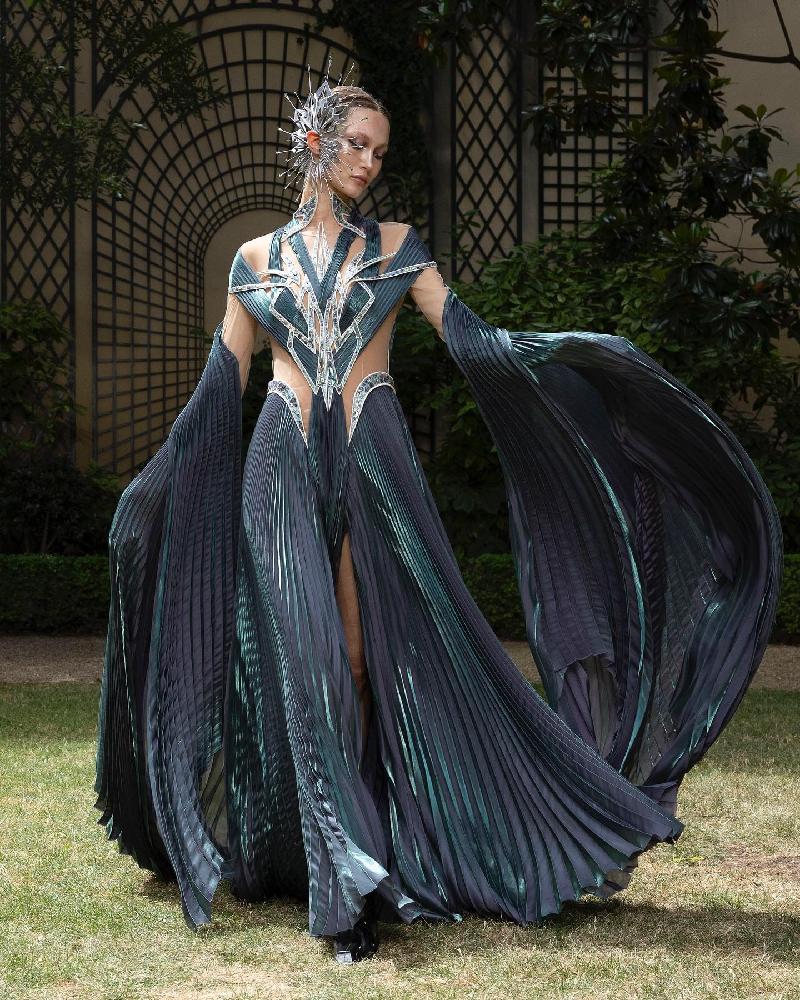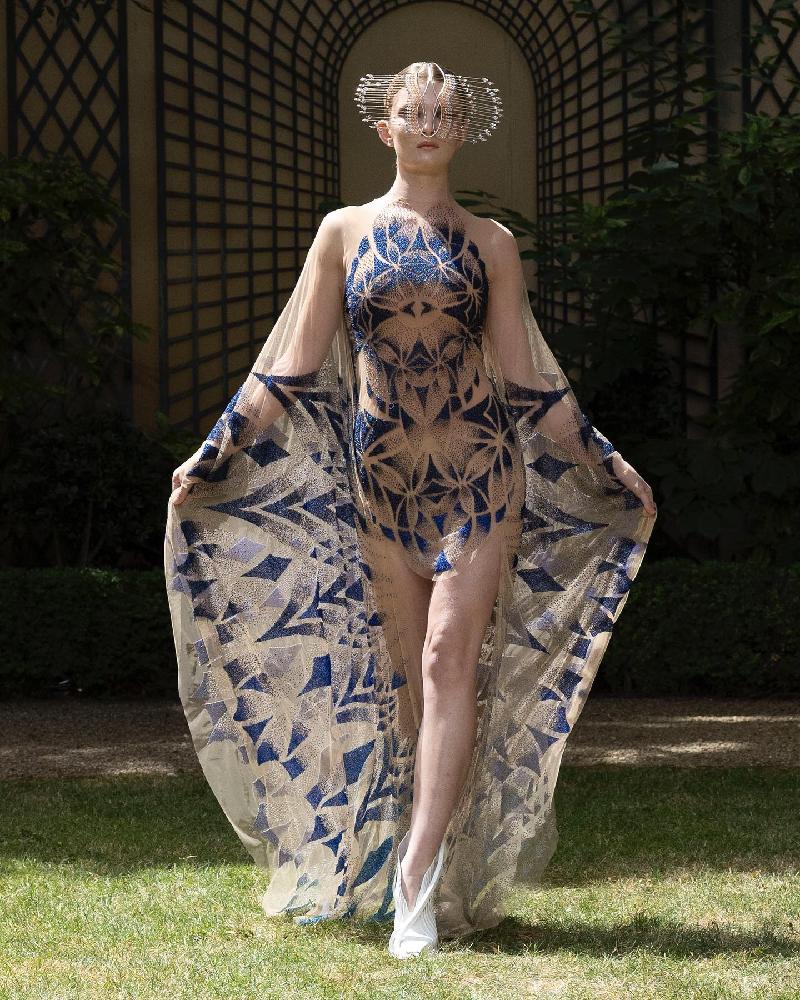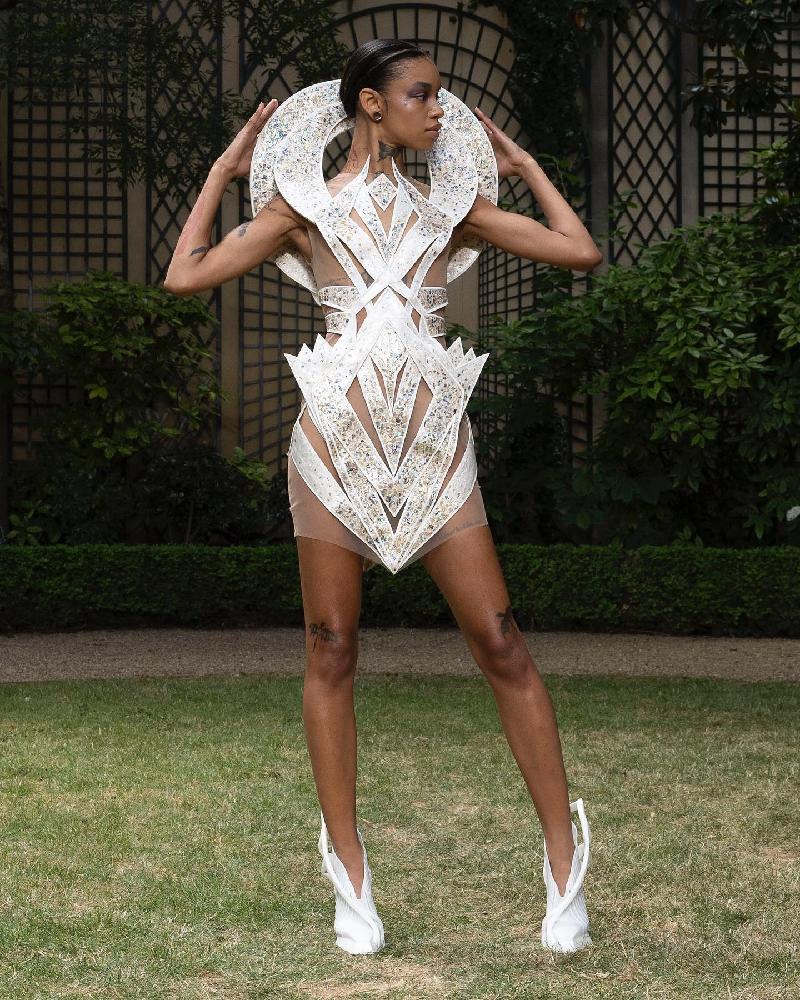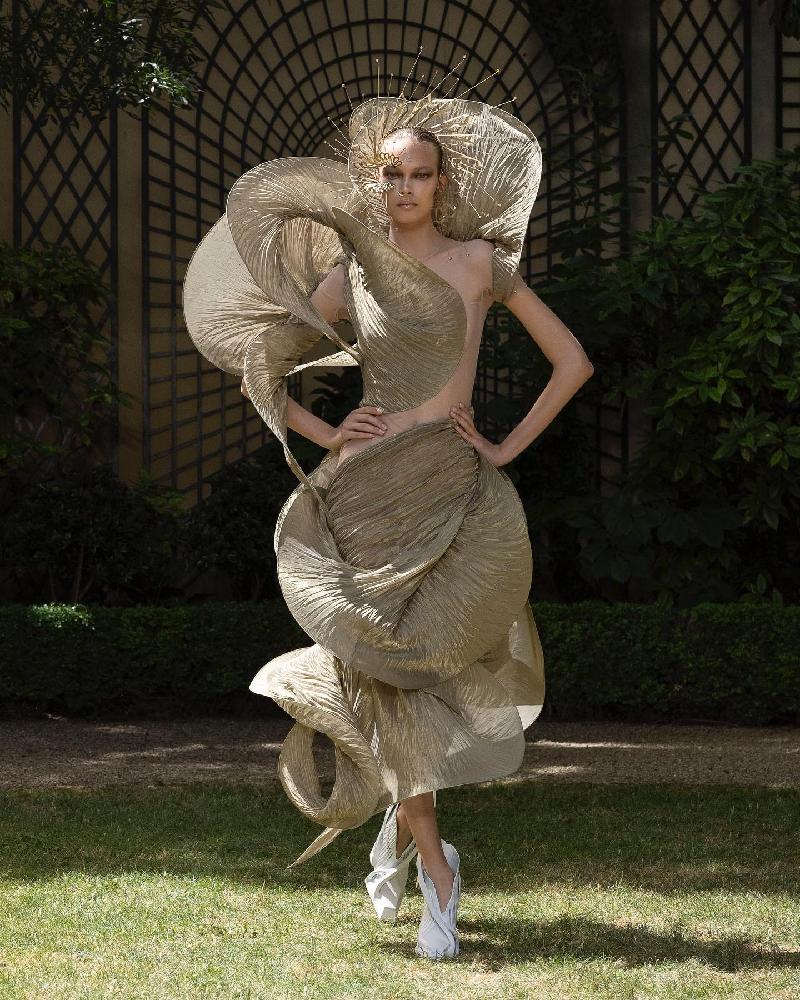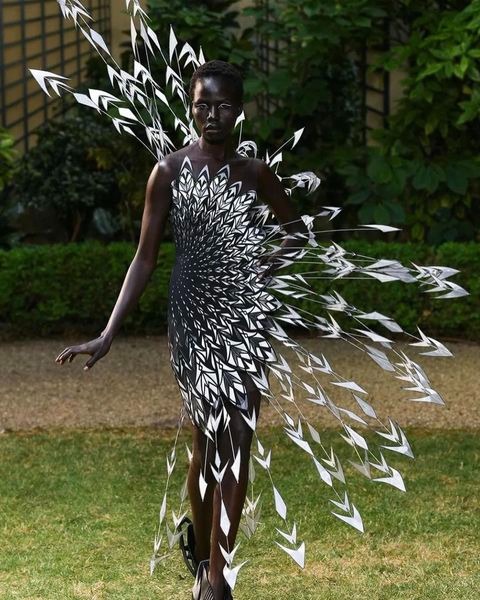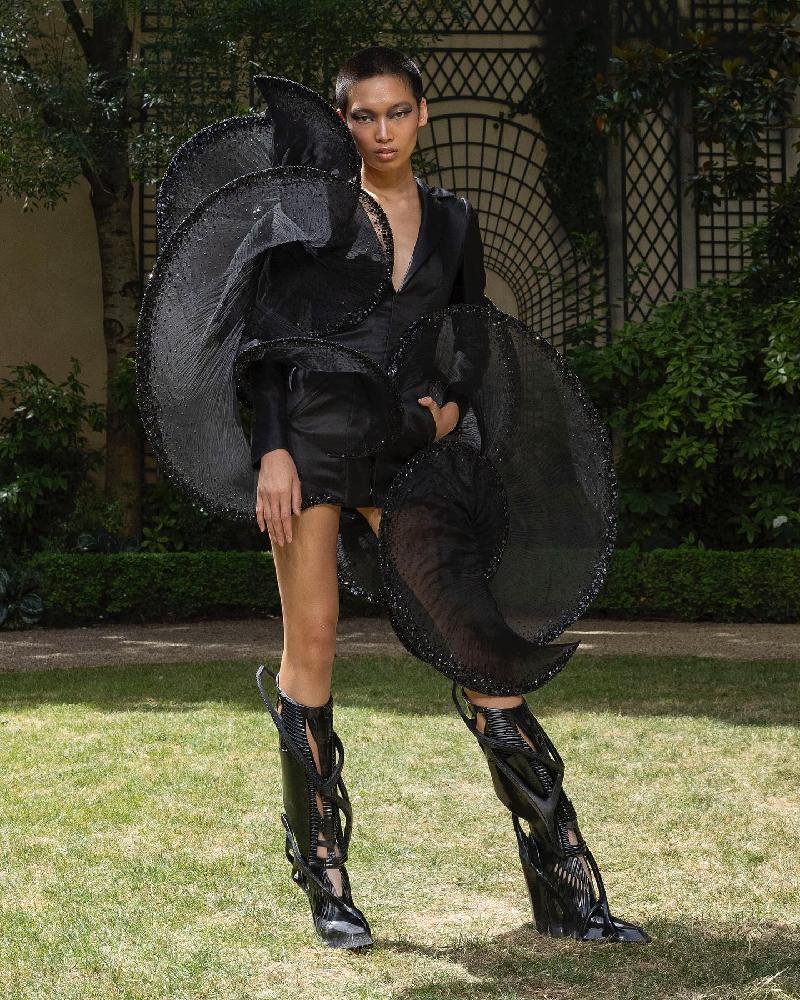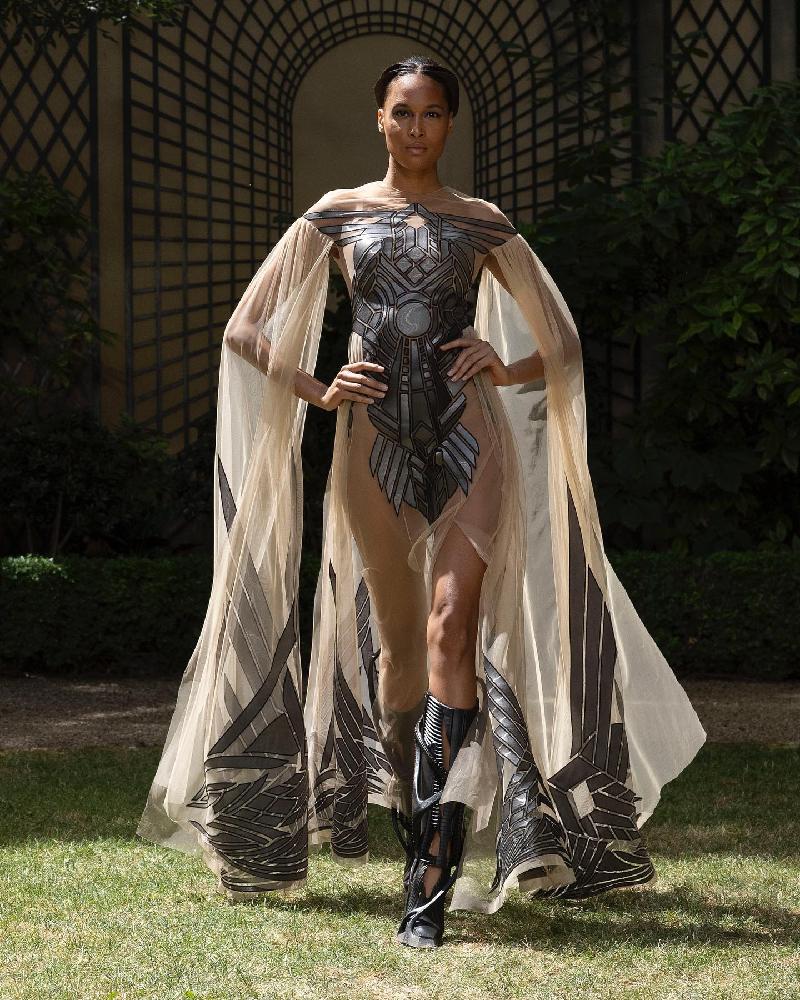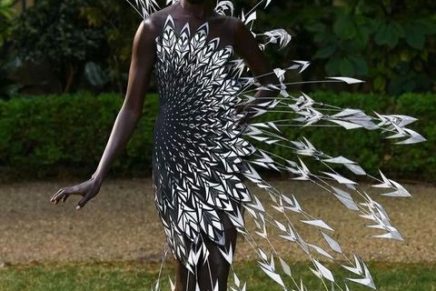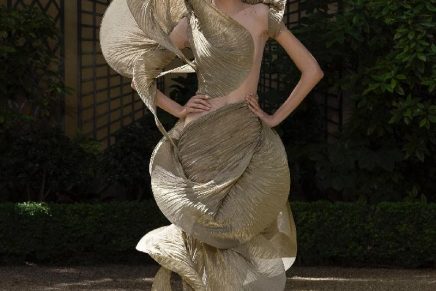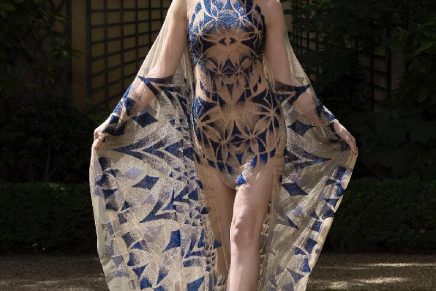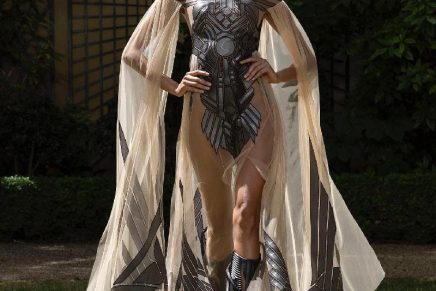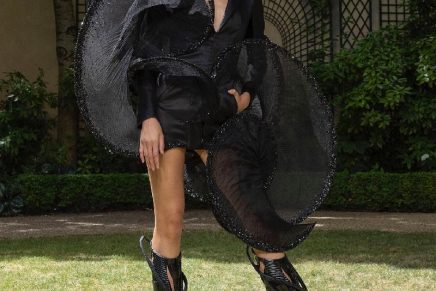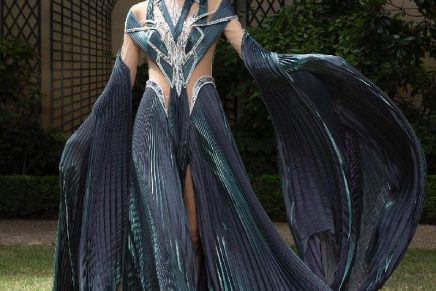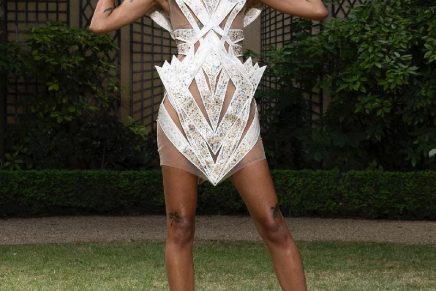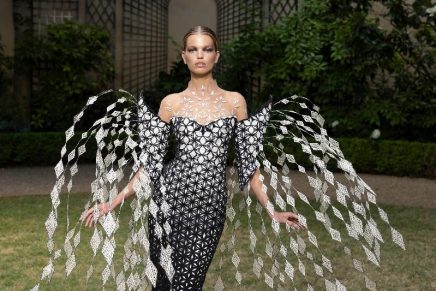This season Iris Van Herpen’s designs draw attention to the visionary ideas of Oceanix, the world’s first floating city and the important new generation of architects that show us the ingenuity and desirability of waterborne architecture.
The new collection embodies the fluidity and fragmentation of aquatic architecture, with dynamic patterns of light and shadow and geodesic voids.
The fashion world is buzzing with excitement as Iris van Herpen, the visionary designer renowned for her avant-garde creations, unveils her latest collection inspired by aquatic architecture. Aptly named “ARCHITECTONICS,” this stunning collection pushes the boundaries of fashion, embodying the fluidity, fragmentation, and innovative spirit of aquatic design.
Drawing inspiration from the future of floating cities and the concept of bionic design, van Herpen’s collection offers a tantalizing glimpse into a world where humans inhabit both land and offshore environments. The visionary ideas of Jacques Rougerie, the esteemed French architect and oceanographer known as the “Architect of the Sea,” provided the initial spark for van Herpen’s creative journey. Rougerie’s work, which merges scientific exploration and architectural innovation, sheds light on the intricate relationship between the oceans and our built environment. His designs of underwater habitats and floating laboratories have served as a catalyst for van Herpen’s exploration of aquatic urbanism.
Another influential inspiration for this collection is the groundbreaking “Oceanix,” the world’s first floating city currently under construction in South Korea. Designed by renowned architect Bjarke Ingels, Oceanix embodies the principles of zero waste and circular systems, closed-loop water systems, net-zero energy, and coastal habitat regeneration. It represents a paradigm shift in urban planning and offers a blueprint for resilient cities of the future.
The collection’s designs materialize the principles of parametric architecture, known for its fluidity, fragmentation, and shifting patterns. The dynamic energy of the pieces is evident in the explosive patterns of light and shadow that dance around the body. Fractal forms, geodesic voids, and distorted perspectives redefine fashion’s traditional boundaries, blurring the lines between fashion and floating architecture.
Van Herpen takes cues from the adaptations of biological organisms in aquatic environments, exploring their physiological, behavioral, and structural characteristics. These explorations have led to the development of innovative couture techniques that challenge conventional notions of fashion. Each look in the collection is digitally modeled before the physical draping process begins, showcasing the intersection of technology and craftsmanship.
The cutting-edge “Biophilic” technique developed by van Herpen involves lasercutting architectural lineworks, which are then bonded together to create molds. Marble-textured silicone is injected into the fine lasercut outlines, while abalone-shell flakes are meticulously inlaid by hand to create stunning gradients. A final transparent layer of silicone enhances the iridescent shell shards, resulting in a harmonious blend of organic and architectural elements.
In addition, the daring “Oceanix” technique introduces bursting patterns in space. Graphic polygon patterns skillfully explode from order to chaos as the models move, with fine fiberglass rods carefully balanced to create an interplay of fluidity and fragmentation. This technique mesmerizingly showcases the connection between fashion and aquatic design.
The color palette of the collection harmoniously blends graphic contrasts of white and black, enriched with metallic silver, bronze, and gold detailing. Soft tones of mint-green intermingle with abalone-blue, turquoise, and pearlescent shell shades, evoking a mesmerizing oceanic ambiance.
Through the “ARCHITECTONICS” collection, van Herpen dares to imagine a future where waterborne urbanism harmonizes with marine ecosystems. With rising sea levels threatening 90 percent of large cities worldwide and over 410 million people predicted to be at risk, the importance of exploring alternative living spaces becomes increasingly evident. Van Herpen’s designs draw attention to Oceanix and the new generation of architects who showcase the ingenuity and desirability of waterborne architecture. This collection encapsulates the duality of our existence, where land and water intertwine, offering a glimpse into a future where we seamlessly inhabit both realms.
Iris van Herpen’s “ARCHITECTONICS” collection is a breathtaking testament to her creative genius and the limitless possibilities of fashion. Inspired by aquatic architecture and bionic innovations, this visionary collection pushes the boundaries of design, embracing the fluidity, fragmentation, and transformative power of the underwater world. With each piece, van Herpen challenges traditional notions of fashion and architecture, envisioning a future where humans coexist harmoniously with the vast oceans.
As we delve into a world where floating cities and waterborne urbanism become a reality, van Herpen draws inspiration from the works of Jacques Rougerie, a visionary architect and oceanographer. Rougerie’s designs of underwater habitats and floating laboratories, influenced by his expertise as a marine biologist and architect, inform van Herpen’s exploration of aquatic urbanism. The collection pays homage to Rougerie’s commitment to bridging scientific exploration and architectural innovation, emphasizing the intricate relationship between humanity and the oceans.
Additionally, the collection takes inspiration from “Oceanix,” the world’s first floating city currently being constructed in South Korea. Designed by the renowned architect Bjarke Ingels, Oceanix embodies principles of sustainability, circular systems, and coastal habitat regeneration. Van Herpen’s collection highlights the importance of these concepts and showcases a radical shift in urban planning, providing a blueprint for resilient cities of the future.
The designs in the collection materialize the principles of parametric architecture, characterized by fluidity, fragmentation, and shifting patterns. They exude dynamic energy, with explosive patterns of light and shadow vibrating around the body. Fractal forms, geodesic voids, and distorted perspectives redefine the boundaries of fashion, offering a unique and captivating aesthetic.
Van Herpen’s exploration of aquatic urbanism extends to the development of innovative couture techniques that blur the boundaries between fashion and floating architecture. Each look is digitally modeled before the physical draping process begins, combining technology and craftsmanship seamlessly. The “Biophilic” technique, a cutting-edge method, involves the use of lasercutting architectural lineworks as molds. Marble-textured silicone is injected into the molds, while abalone-shell flakes are hand-inlaid to create mesmerizing gradients. A final transparent layer of silicone enhances the iridescent shell shards, resulting in a breathtaking fusion of organic and architectural elements.
The “Oceanix” technique introduces bursting patterns in space, representing the connection between fashion and aquatic design. Graphic polygon patterns explode skillfully from order to chaos as the models move, with meticulously balanced fiberglass rods creating an interplay of fluidity and fragmentation. This technique adds a dynamic and captivating element to the collection, further blurring the lines between fashion and architectural innovation.
The color palette of the “ARCHITECTONICS” collection evokes an oceanic mood, combining graphic contrasts of white and black with metallic silver, bronze, and gold detailing. Soft tones of mint-green, abalone-blue, turquoise, and pearlescent shell shades create a sense of tranquility and beauty, inviting the audience to immerse themselves in the underwater world.
Beyond its aesthetic allure, the “ARCHITECTONICS” collection carries a profound message about the future of our planet. With rising sea levels and the vulnerability of coastal cities, the exploration of waterborne urbanism becomes crucial. Van Herpen’s designs draw attention to Oceanix and the visionary architects shaping a sustainable future, challenging conventional notions of living spaces. By seamlessly blending fashion and floating architecture, this collection encapsulates the duality of our existence, where land and water intertwine.

